Ancient dogu figurines with large goggle-eyes defy scholarly explanation
The Jomon Period is the earliest identifiable period in Japanese history and is broken into several categories—Incipient, Early, Middle, and Late. Comprised of a sedentary culture, the Jomon people are best known for their early pottery skills and are considered to have created the earliest forms of pottery in the world.
Jomon vessel dated to the Middle Period, (3000–2000 BC).
Most significant about the Jomon culture are their dogu: human- or animal-like figurines which appeared as early as the Incipient Period, roughly 14,000-4,000 BCE, but were most significantly produced in the Middle Period. It is believed by most Japanese art and archaeological scholars that, despite their multiple possible functions, these works were most likely evidence of an early religious culture and shamanic rites.
The Jomon culture mostly likely spanned the whole of the Japanese archipelago, evidenced by the Jomon pottery found throughout the various islands. Most often, these dogu figurines were found in grave circles or stone circles, indicating some form of spiritual inclination of the culture. Finding these figurines among the dead signify that there was some meaning for them in afterlife rituals, though what exactly this meaning was can never be definitively known. However, these statuettes underwent many forms of transformation throughout the various periods within the Jomon culture, indicating both a sophistication of artistic technique—undoubtedly inspired by external cultural interactions—and a heightened level of spirituality. This is best understood by an analysis of the figurines themselves.
There are various types of dogu figures, categorized into four groups: "heart shaped (or crescent-shaped eyebrow)", "horned-owl type", "goggle-eyed type", and "pregnant woman type." The various types all follow the same basic pattern: they tend to appear short and heavy, with small, wide legs, and broad shoulders and hips. Differences are identified by the previously mentioned names of the forms—the venus figures tend to have further accentuated hips (Figure 1) and the "goggle-eyed" have enormous eyes that nearly swallow them entire face (Figure 2). Because of the tendency for all of these forms to be women however—evidenced by their breasts and the lack of penises—there is a very prominent belief among scholars that the dogu might have been fertility statues.
Figure 1. Unknown, Clay Figurine, 1000-300 BCE.
The basis for the belief that most dogu had some fertility connotation is derived from scholarship regarding other cultures. The figures are often compared to other figures, predominately of western culture, such as the prehistoric Venus of Willendorf . Images such as Venus/Woman of Willendorf are considered most likely to represent either an all-encompassing Earth Mother, or the idea that prayer for fertility and safe births was necessary.
The Venus of Willendorf, statuette found in Austria, thought
to have been made 28,000 and 25,000 BCE.
Looking at such dogu as Figure 1, it is understandable to postulate a similar function because of the figure's emphasis. Again, while all found dogu share wide hips and shoulders, there is a heightened emphasis on the venus figures¸ as seen in the love handles and bare chest in Figure 1. Placing this depiction in conjunction with the time frame of the Jomon, a time in history when medicinal knowledge was limited and the likelihood of dying in childbirth was high, these fertility images would have been both important sources of faith and hope for the continuation of familial lines. Thus, these figures might have acted as godly offerings from the Jomon people, physical and representative prayers for safe delivery.
Another variation of the dogu figures are the previously mentioned "goggle-eyed" type, described by scholars as looking like "spacemen," because their exaggerated eyes are exaggerated (Figure 2). The pertinence of this description is that these were undoubtedly not used in the same way as the venuses, based strictly on the placement of emphasis. While still wide-hipped, the eyes are their most important feature, thus it can be assumed that watchfulness was their importance.
The Jomon were a society of hunters and gatherers, as were most groups in the period, however their uniqueness laid in their security. They, unlike other cultures, had a plentiful food supply, little risk of invasion because of their location, and therefore a lot of leisure time. Thus, their watchfulness undoubtedly would not have applied to hunting endeavors or warfare. The watchfulness—if that is indeed the intention of the goggle eyes—could very likely have applied to religion, in the same way the ancient Sumerian votives emphasized big, bright, lapis lazuli eyes.
Once more, it is impossible to definitively know the purpose of the dogu, so it is logical to turn to other cultures for advice. In the Sumerian culture, human figurines were often placed on the temples of ziggurats as permanent stand-ins for worshippers, so the gods would be aware that these people were constantly praying. These "goggle-eyed" dogu might have been used for the same type of religious substitution, whether they were worshipping a particular deity or were intended to represent a person's trip to the afterlife.
Figure 2. Unknown, Shakōki-dogū, 1000-400 BCE.
What all forms of the dogu have in common are the postulations for their functions. The previously mentioned concept of fertility protection or enhancement allows for the theory of a Jomon belief in magical practices. It is unknown for certain whether the Jomon had the equivalent of wise women or men, shamans or priests, but in reviewing all the discussed evidence, there does appear to be a form of religious practice at play with the figurines. They were, as mentioned, predominately discovered in graves or stone circles (considered by scholars to be equivalent to shrines), indicating through their locations that they were undoubtedly used in rituals of some kind.
More importantly, and pertinent to this argument, all of the dogu found—spanning the various types—were intentionally found broken. There is no evidence that they were worn down through time or shattered by accident. According to current scholarship, there are definitive indications that they were broken on purpose.
As the dogu disappeared by the time of the cultural shift into the Yayoi period, 300 BCE-300 CE, it is logical to assume that the dogu figurines were particular to the Jomon culture rather than adopted and adapted by the new settlers. Therefore, whatever purpose they had for the Jomon was lost by the time the Yayoi period ended. However, due to their similarities to other religious forms of pre-historic art, the findings of dogu in cemeteries—innate places of religion—and the apparent intentional breaking of the statues, it can be logically postulated that these figures were part of some form of religious and shamanic culture in the Jomon period. It is merely the misfortune of time that this cannot be definitively known.
Jomon clay statue, Kazahari I. Late Period (1500 – 1000 BCE).
Source: http://www.ancient-origins.net/artif...722?page=0%2C1
peace...




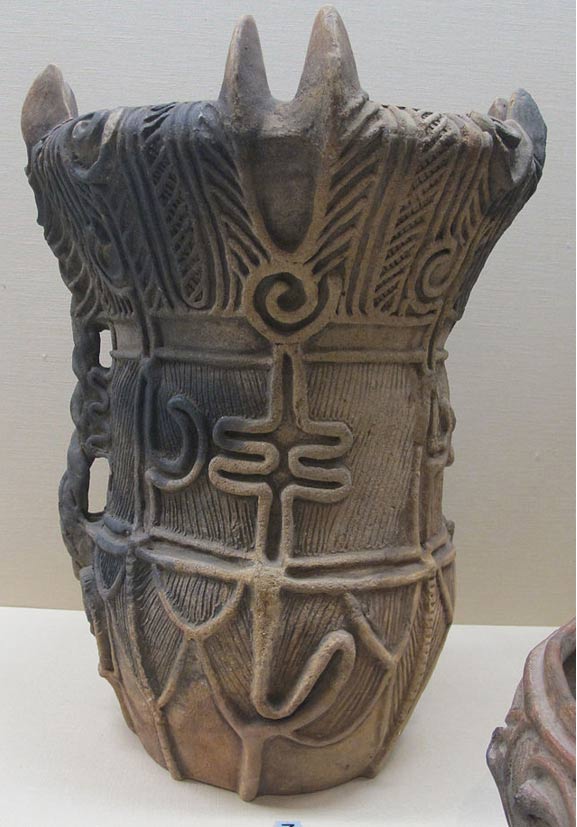
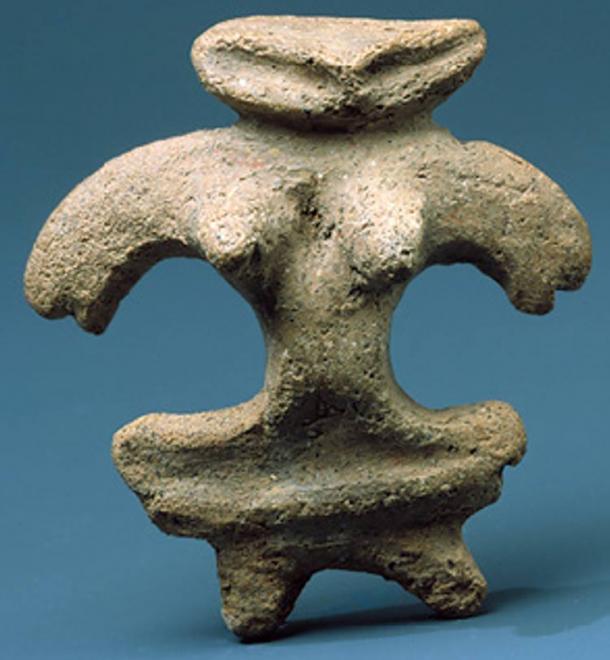
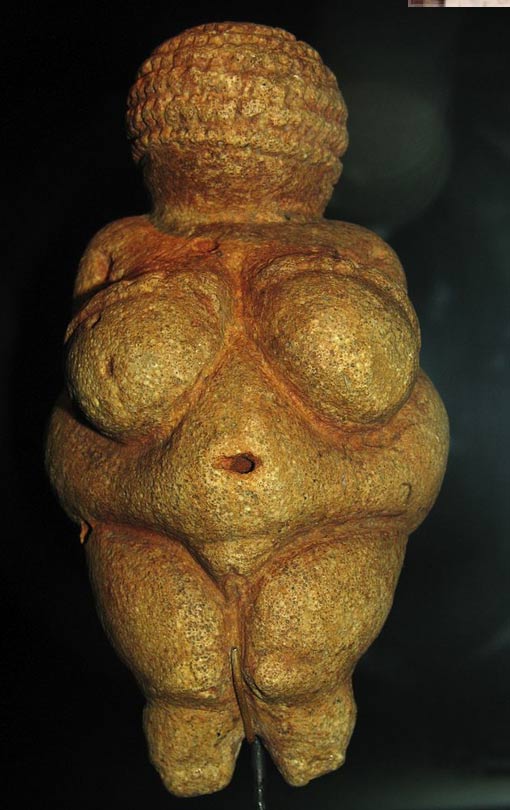
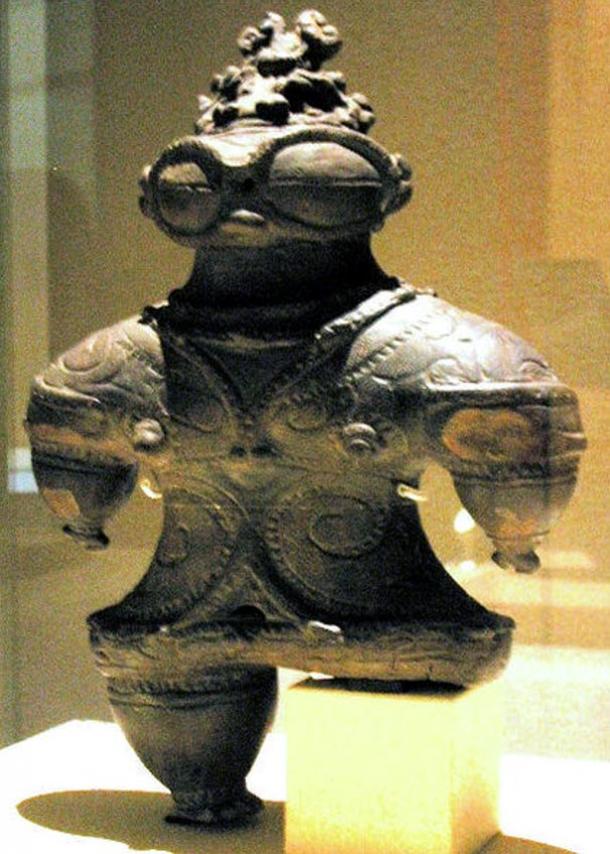
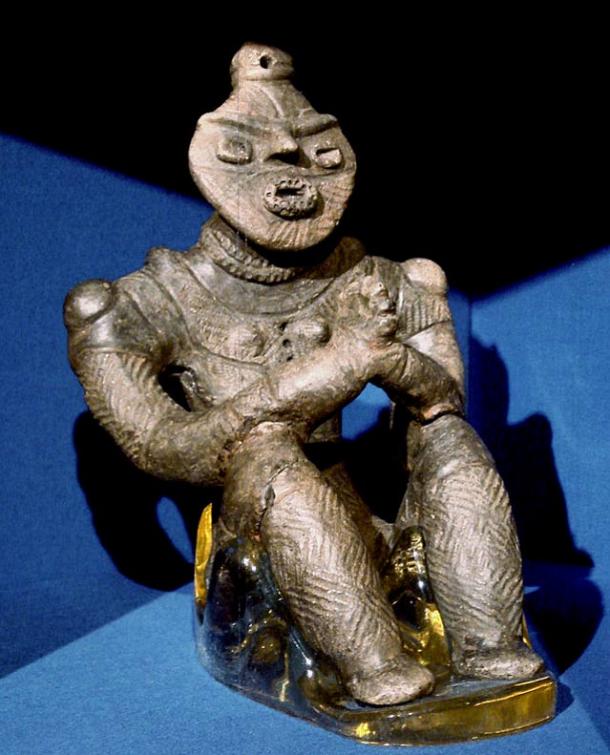

 Reply With Quote
Reply With Quote
Bookmarks